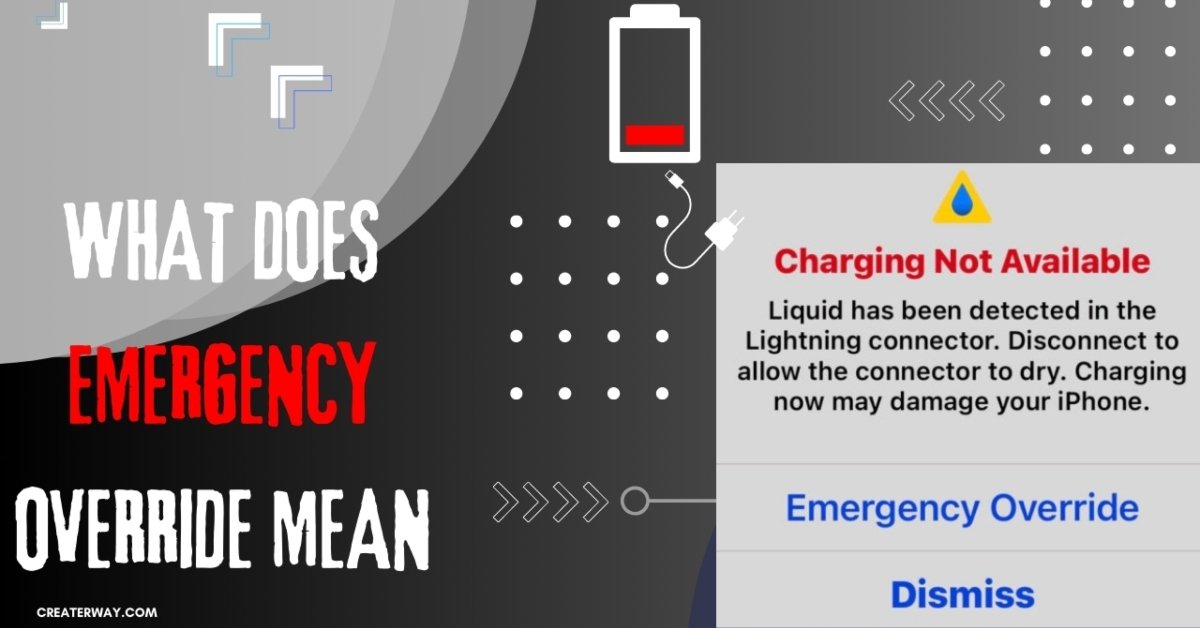technology
WHAT DOES EMERGENCY OVERRIDE MEAN

What does emergency override mean?In every situations every second counts. That’s why it’s essential to have mechanisms in place that can override normal procedures. And take immediate action to prevent further harm or damage. This is where the concept of override comes in.
iPhone Charging Low:
What to Do?
If you’re an iPhone user, you may have encountered a message on your phone saying “battery low” or “low power mode” when your phone’s battery is running out of charge. Here are some steps you can take when your iPhone battery is low:
- Plug in your phone to a power source
The quickest and easiest way to charge your phone is by connecting it to a power source using the Lightning cable that came with your iPhone.
- Enable Low Power Mode
This feature reduces your phone’s power consumption by turning off certain features such as background app refresh and automatic downloads. To enable Low Power Mode, go to Settings > Battery > Low Power Mode, and toggle on the option.
- Close unnecessary apps
Having too many apps running in the background can drain your phone’s battery quickly. To close apps, swipe up from the bottom of the screen, and swipe left or right to find the app you want to close. Then, swipe up on the app to close it.
What is Emergency Override?
An override is a system or process that allows critical operations to be bypassed or altered in emergencies. It enables authorized personnel to take immediate action to prevent harm, mitigate damage, or restore critical systems. The override systems can be found in various contexts, from industrial control systems to medical devices, transportation systems, and more.
How Does Emergency Override Work?
The specific implementation of crisis can vary depending on the context and the type of system involved. However, some common principles apply to most cases. Let’s take a closer look at how emergency override works in some common contexts.
Emergency Override in Industrial Control Systems
In industrial control systems, emergency override is often implemented through a safety instrumented system (SIS). An SIS is a dedicated system that monitors critical parameters, such as pressure, temperature, flow rate, and level. And initiates a safe shutdown or a safe mode operation if any of these parameters exceed their safe limits.
The SIS can be designed to override the regular control system’s actions and take specific actions to prevent harm or mitigate damage.
For example, in a chemical processing plant, an SIS can shut down the reactor, activate an emergency cooling system, or open relief valves to release excess pressure.
Emergency Override in Medical Devices
In medical devices, The override can be initiated by healthcare professionals to override the device’s normal operation. And take immediate action to save a patient’s life. For example, in an automated external defibrillator (AED). The override can be used to deliver a shock to the heart even if the device’s automatic analysis suggests otherwise.
Emergency Override in Transportation Systems
In transportation systems, The initiated by the driver or other authorized personnel to take immediate action to prevent accidents or collisions. For example, in a train, The override can be used to apply the crisis brakes, activate warning lights and sounds, and communicate with passengers and the control center.
Why is Emergency Override Important?
The override is essential in emergencies because it enables authorized personnel to take immediate action to prevent harm, mitigate damage, or restore critical systems. In many cases, a delay of a few seconds can make a significant difference in the outcome of an crisis.Moreover, The override can help minimize the impact of human errors, equipment failures, or other unexpected events that can lead to emergencies. For example, in an AED, an emergency can help overcome false-positive results, user errors, or faulty equipment.



